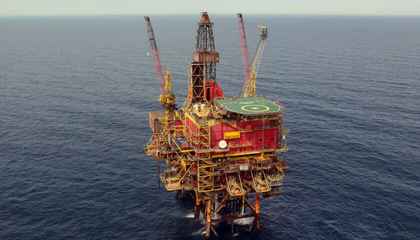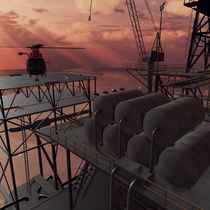This simulator is training oil platform workers the behaviour under the occur of an emergency situation. Engaging and realistic environments together with first person scenario makes you live the moment and fully perceive the emergency-training information.
We have started the project as we do with all the others - an in-depth research was made in order to locate which parts of the industry could be adjusted in a way that would guarantee profit or money-save. Though we can provide custom solutions to specific needs of companies, here we went for investigation of how we could help on our own. It turned out that Oil & Gas industry has two main factors where VR solutions could be successfully integrated: expensive equipment for training and emergency situations. While equipment and its transportation to platform is usually a full operation to take care, it is much more convenient to train the employees how to use it even before they touch it in real life. This saves time as workers fully understand the equipment prior to its arrival. Also, such trainings eliminate the possibility of a training failure in real-life as in VR workers can learn from their own mistakes right away without any actual consequences. Apart from all the training based on new equipment integration or individual skill upgrading tasks, emergency situations caught our attention at second place. Though safety precautions are being taken very seriously in all the platforms and other Oil & Gas facilities, virtual reality not only fully eliminates the injuries and accidents possible to happen on real-life emergency trainings, but also provides much better results.
Trainees are able to experience the emergency situation as they are transferred to the location like they would watch a movie. Only here, they are the main protagonists and it is up to them to follow all the audio guidance through an advanced level scenario which introduces all the safety equipment and how to use it, detailed visual explanations of evacuation plans, best emergency routes and so on. The mentioned aspects are exactly what we have chosen to recreate in our demo version for oil platform workers.
The development process of the oil platform started with creating the environment as close to the real-life platform as possible. 3D modelers were using the reference material provided by researchers and created the atmosphere that best suited our emergency evacuation scenario. After this was done, we have implemented realistic movement and task mechanics so the user could actually feel like a platform worker.
Our post-demo work on this project now focuses on creation of new assets - real life objects that could fill up the environment for it to feel even more realistic. After we successfully executed emergency training scenario, we will develop a couple of more visualized interactions to even further engage the user into the virtual training experience. Multiplayer feature is also planned to be introduced for the trainees to be able to train at once and interact between each other. This will lead to better team-build and decision-making skills.














